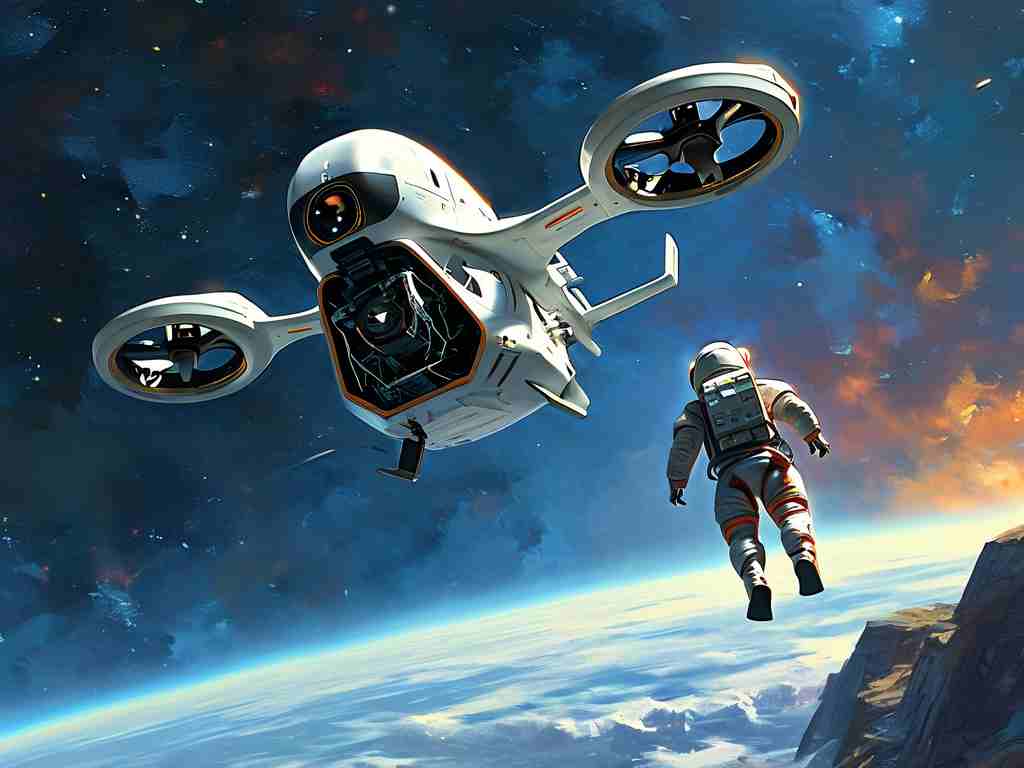The integration of robotic escort systems with aerial vehicles is revolutionizing aviation operations across industries. This cutting-edge approach combines autonomous navigation algorithms with real-time spatial coordination, enabling unmanned systems to accompany manned aircraft or other drones with millimeter-level precision.

At its core, robotic flight companionship relies on three interconnected subsystems: adaptive positioning sensors, swarm communication networks, and predictive trajectory modeling. Millimeter-wave radars maintain relative positioning within 0.5-meter accuracy even at 300km/h speeds, while quantum-resistant encryption ensures secure data transmission between units. The technology's machine learning backbone analyzes over 200 environmental parameters per second, from wind shear patterns to electromagnetic interference.
Commercial aviation stands to benefit significantly from this breakthrough. Airbus recently completed trials using robotic escorts for wide-body aircraft inspection during flight. These cigar-shaped drones equipped with thermal cameras circle airliners at safe distances, detecting structural anomalies that traditional ground inspections might miss. "This reduces mandatory maintenance downtime by 40%," revealed Boeing's Chief Aerospace Engineer during a recent aviation symposium.
Military applications demonstrate even more sophisticated implementations. The US Air Force's Loyal Wingman program deploys AI-driven escorts that autonomously execute defensive maneuvers. These robotic companions utilize distributed aperture systems to create 360-degree threat detection bubbles, processing incoming data 18% faster than human pilots according to Pentagon test reports.
Emergency response operations present another critical use case. During wildfire containment missions in California, drone escorts now precede helicopters through smoke-filled corridors. Their multi-spectral imaging systems map safe flight paths while monitoring sudden flame fronts. This technology helped reduce aerial firefighting accidents by 62% last year compared to previous five-year averages.
Technical challenges persist, particularly in heterogeneous fleet coordination. Researchers at MIT's Aerospace Controls Laboratory recently solved a critical synchronization issue through innovative time-stamped command protocols. Their solution enables seamless interaction between various drone models and manned aircraft, achieving 98.7% coordination accuracy in mixed formation tests.
Energy management remains another frontier. Current escort systems require frequent battery swaps during extended missions. However, breakthroughs in wireless power transfer show promise – experimental laser charging systems demonstrated 15% mid-flight energy replenishment during night operations in NASA-funded trials.
Regulatory frameworks struggle to keep pace with these advancements. The FAA's proposed "Dynamic Airspace Partitioning" concept aims to create temporary flight corridors for robotic escorts. Early simulations suggest this could increase national airspace capacity by 23% without compromising safety margins.
Ethical considerations continue to spark debate within aviation communities. A recent IATA white paper emphasizes the need for human oversight protocols, particularly regarding autonomous decision-making in emergency scenarios. Proposed solutions include hybrid control systems that blend AI processing with pilot override capabilities.
As the technology matures, cost-effectiveness improves dramatically. What required $2 million hardware setups in 2020 now achieves superior performance with $120,000 systems. This price reduction has enabled small airlines and even private operators to implement basic escort functionalities for weather monitoring and collision avoidance.
The next evolutionary phase involves biological integration. DARPA's BioHybrid project explores using genetically modified insects as living sensors for robotic escorts. While still in conceptual stages, initial prototypes demonstrated successful pheromone-based communication between drone swarms and silkworm moth guidance systems.
Looking ahead, industry analysts predict robotic flight companionship will become standard in commercial aviation by 2035. As artificial intelligence converges with advanced propulsion systems and space-grade materials, these technologies promise to redefine our fundamental understanding of aerial coordination and flight safety paradigms.

